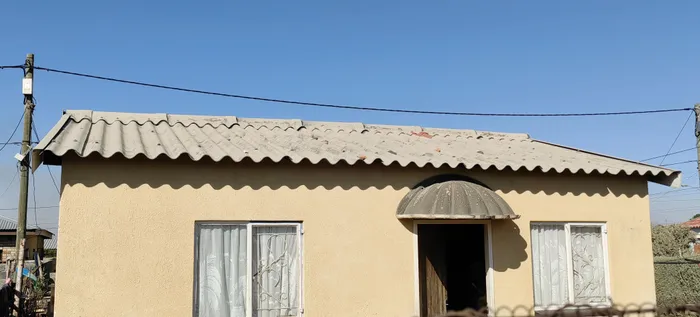Toxic situation: Residents ‘left behind’ in Sol Plaatje’s asbestos audit

Ward 3 residents are demanding answers after being excluded from an asbestos risk assessment, leaving them exposed to serious health dangers and without any response from the municipality.
Image: Danie van der Lith / DFA
RESIDENTS of several wards, including Ward 3, in the Sol Plaatje Municipality are growing increasingly anxious as their homes, many still capped with hazardous asbestos roofing, were excluded from a recent municipal assessment aimed at identifying and addressing the health risks posed by asbestos-containing structures.
On June 18, the Human Settlement Service Committee convened in the council chambers to brief members on the number of houses and structures in the region built with asbestos products. This came in the wake of South Africa’s 2008 national ban on the use, import, and manufacture of asbestos, due to the mineral’s well-documented health risks.
Asbestos exposure has been linked to deadly diseases such as mesothelioma, lung cancer, and asbestosis, often years after exposure, with symptoms quietly worsening over time.
A preliminary survey conducted by the municipality identified several wards where residents were at risk due to the presence of asbestos materials in homes. However, residents from other wards, including Ward 3, were dismayed to learn that their areas had not been included in the exercise.
Now, questions are mounting in the community.
“We were never even counted,” said a long-time Ward 3 resident and community activist.“Many homes here still have old asbestos roofs. Why were we left off the list? Our children are breathing this air too.”
His sentiments were echoed by several other concerned residents, who pointed to long-standing neglect of their community’s needs and the silent health toll they believe they are paying as a result.
“In 1994, I voted for the ANC here on this open piece of veld. I have stayed in this house since then with this asbestos roof,” one resident said, standing at her gate with her home in the background. “Up until now, nothing has changed here, and I don’t know what this asbestos is doing to our bodies.”
Another resident spoke of recurring respiratory issues. “I heard that asbestos is bad for a person, and now I wonder if it is not that which is causing these problems with my chest.”
These residents’ fears are not unfounded. Asbestos, once hailed for its insulation and fireproofing properties, breaks down over time. Microscopic fibres released into the air can be inhaled without detection and accumulate in the lungs. Decades later, they can manifest as serious, often fatal illnesses.
For residents already burdened by poverty and limited access to health care, the idea that their homes could be slowly poisoning them is both terrifying and infuriating.
What makes matters worse is the silence from the authorities. The DFA sent a formal media enquiry to the Sol Plaatje Municipality two weeks ago requesting clarity on the exclusion of several wards, including Ward 3, from the asbestos audit and the broader removal plan. As of the time of publication, the municipality has not responded.
This lack of communication has left residents feeling abandoned and vulnerable.
“We don’t know what’s going to happen or when,” said a local mother of three. “No one tells us anything. We sit in these homes, wondering what damage has already been done to our families.”
Community leaders and advocacy groups are now calling on the municipality to extend its asbestos survey to include all wards, especially those known to have aging RDP and government-built homes constructed prior to the 2008 ban.
“This is not just a housing issue; it’s a public health emergency,” said one local housing rights advocate. “People cannot be expected to live with materials that were banned more than 15 years ago. Every human life matters.”
As the debate continues in council chambers, the people of Ward 3 wait for more than just answers; they wait for justice, action, and the dignity of living in a safe home.
Related Topics: